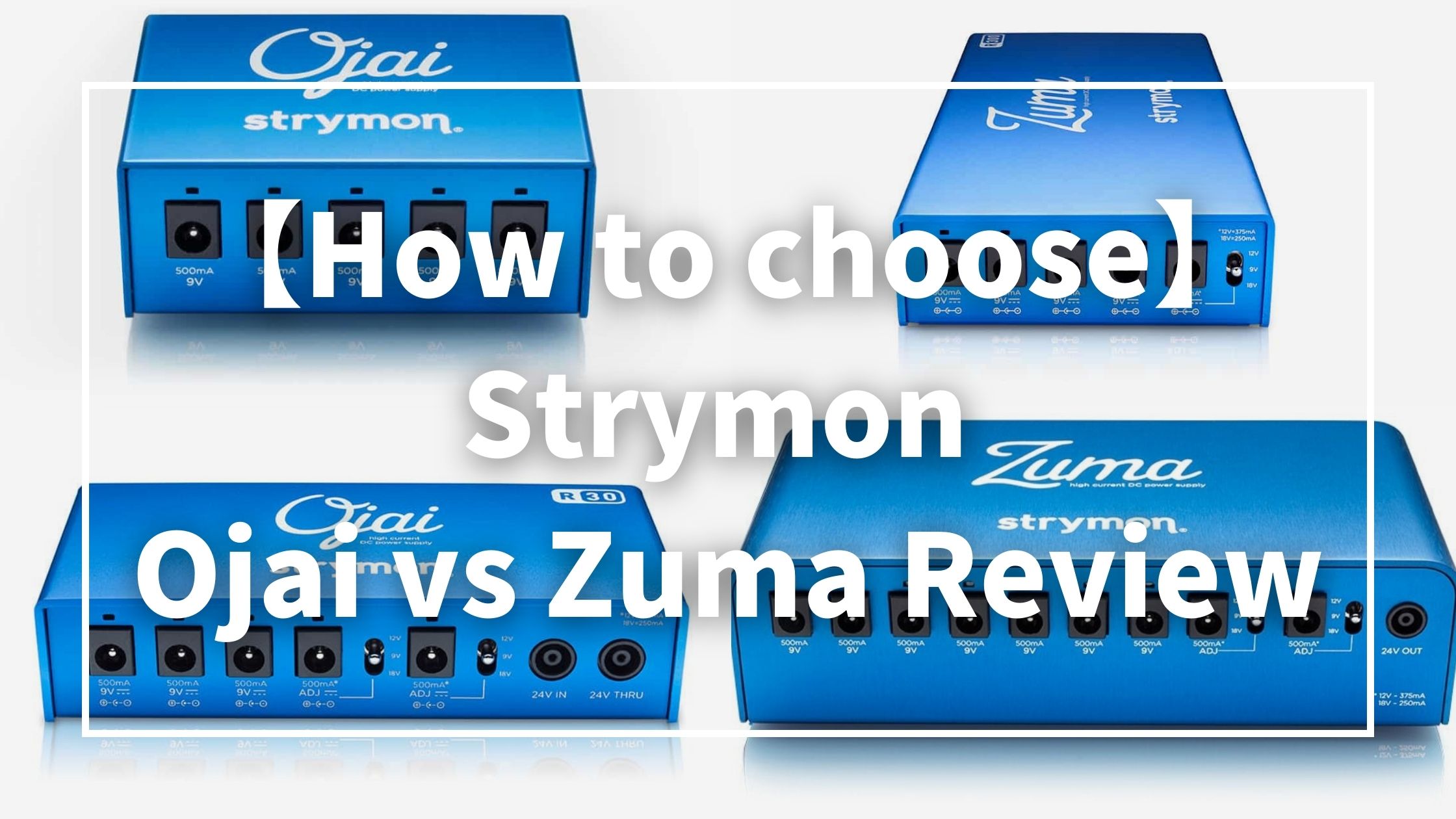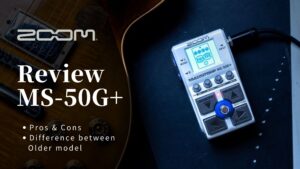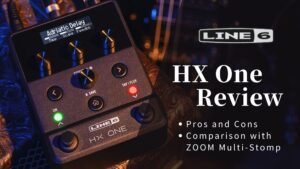The power supplies from Strymon are one of the best choices; its unique design, designed and manufactured in the USA, provides unparalleled noiselessness. It can drive almost any pedal. The small size of the unit makes it easy to install on a pedal board. However, if you want to power many pedals, you will need to spend more.
● Looking for the highest quality power supply?
● Seeking a noiseless power supply?
● Want to know the difference between the Ojai R30 and Zuma R300?
● What are the advantages and disadvantages of Strymon’s power supply?
If you’re asking these questions, please read on.
Strymon, known for developing numerous legendary ambient pedals like Timeline and Bluesky, has introduced the power supplies Ojai and Zuma. These were developed to power multiple digital pedals in the best possible environment. Former musical instrument store clerk, Yosh (@Yosh_Guitar), explains the pros and cons of Strymon’s power supplies and compares the different models.
Pros of Ojai and Zuma
Extremely Noiseless, Great Sound
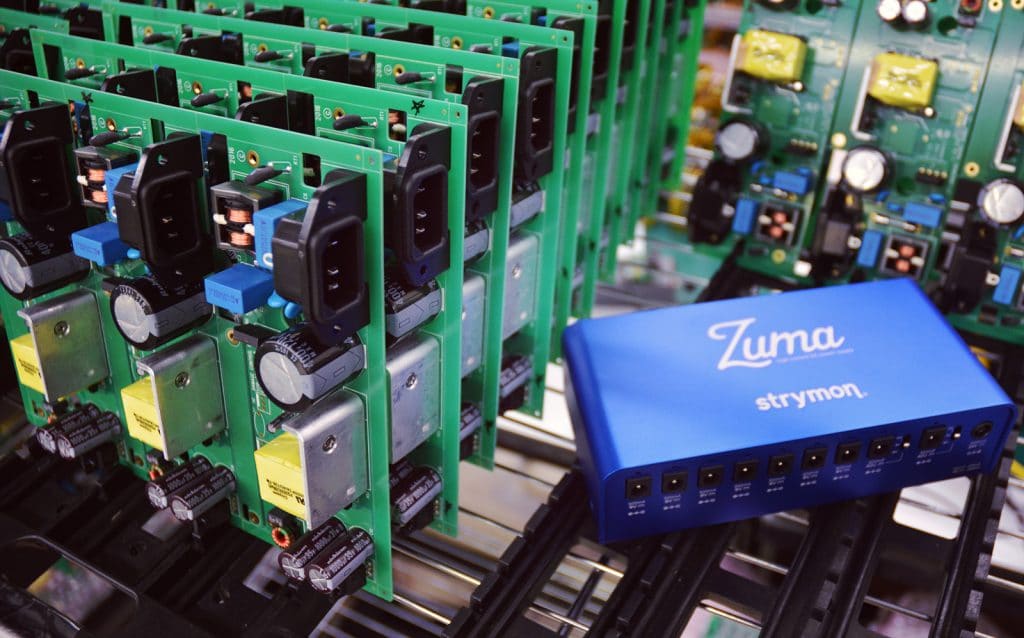
Strymon, primarily developing digital pedals, has designed a power supply that maximizes their quality. Common power adapter noises, like high-pitched whines or low hums, are not heard with Strymon. Strymon’s dual-stage topology, pre-regulated outputs, optically isolated feedback, and advanced multistage filtering allow your pedals to achieve their highest possible dynamic range. The sound quality is undoubtedly better than using regular power adapters. Note that splitting a single power adapter into multiple outputs can also be a source of noise.
Dual Isolation Allows Simultaneous Use of Analog and Digital Pedals
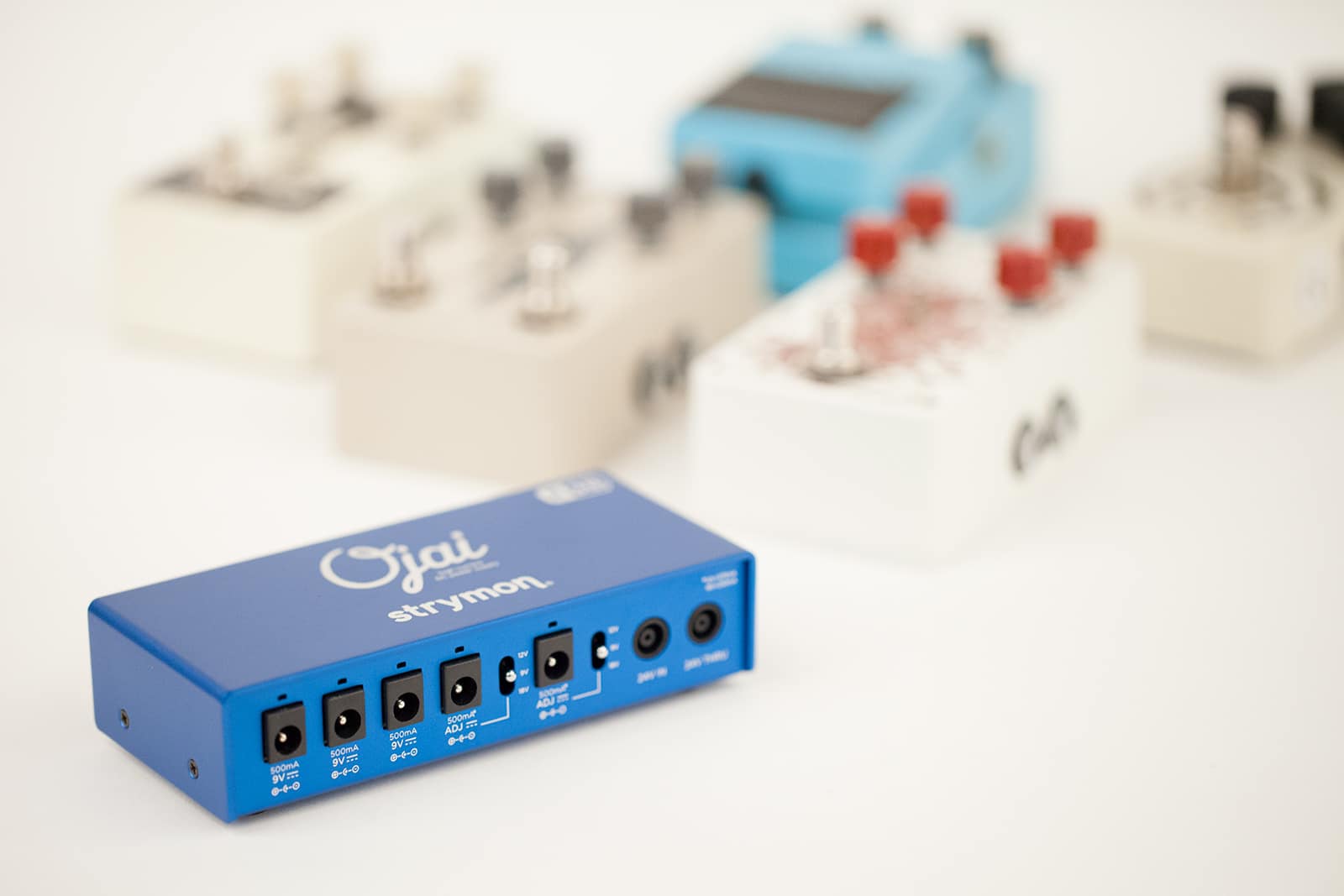
With Strymon, a two-stage dual isolation ensures that each power output terminal is completely isolated. This eliminates interference from AC power source noise and ground loop noise. This means that even if you supply power to both analog and digital effectors with a single power supply, no noise will occur.
Especially, many ambient pedals are digital. On a pedal board, it’s common to connect at least a distortion pedal and ambient pedal simultaneously.
However, if you use digital and analog pedals at the same time with a non-isolated power supply, noise will occur. Also, be careful with cheap power supplies. Even if they are labeled as “isolated,” they can still introduce noise.
500mA Output Suitable for Many Digital Pedals
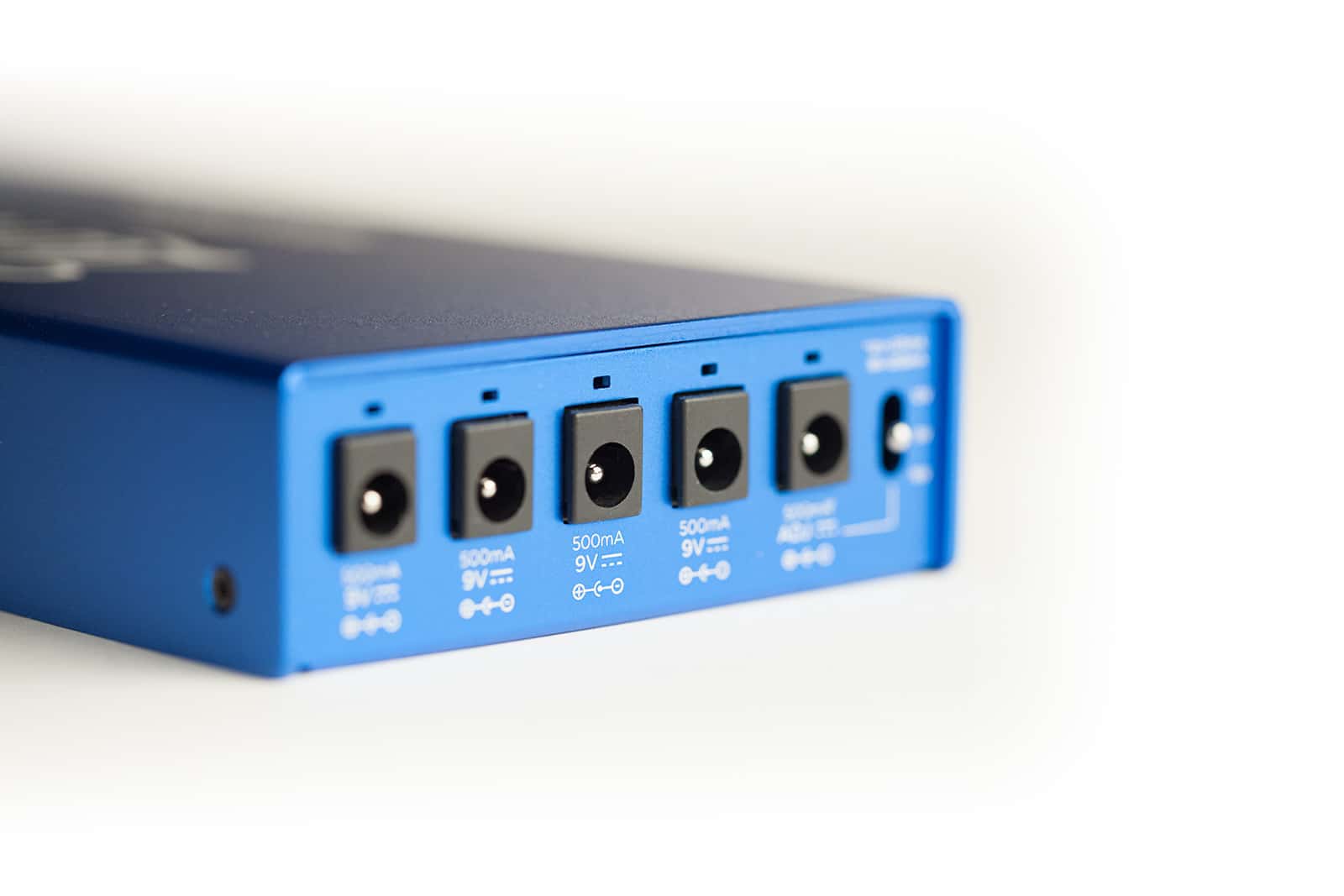
While there are power supplies without a 500mA output, all of Strymon’s power supply outputs have a maximum current consumption of 500mA each. Many digital pedals require a current consumption of 500mA. For instance, ZOOM’s multi-effectors, BOSS’s spatial 500 series, LINE6’s stomp modeler series, and of course, Strymon all require 9V 500mA.
It’s safe to say that they can power almost all pedals. By the way, multi-effects like the Line6 HX Stomp or BOSS GT-1000CORE, which require 1,000mA, can also be powered using a doubler cable.
9V / 12V / 18V Switching (excluding the original Ojai)
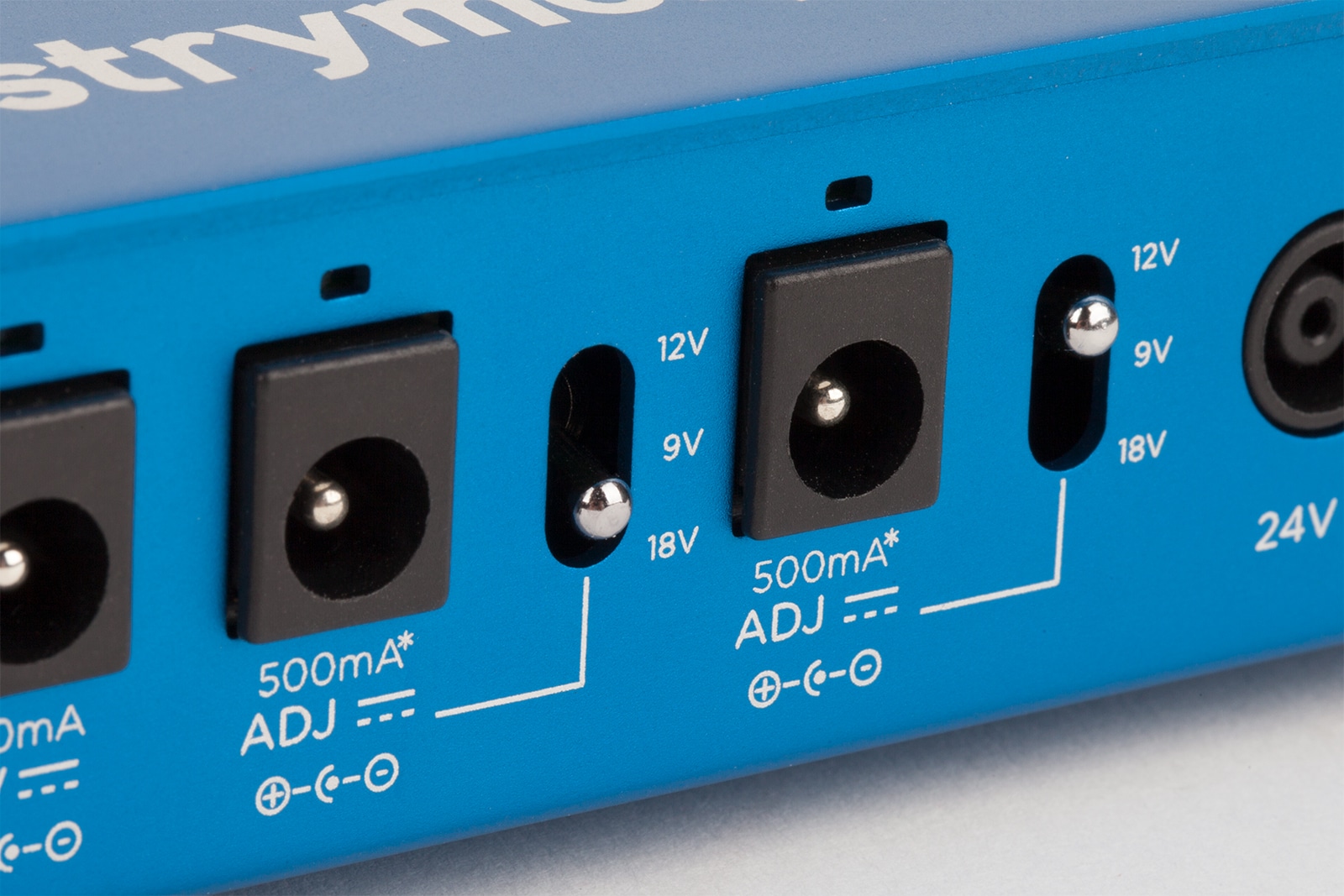
The Ojai R30 and Zuma have two terminals, while the Zuma R300 has one terminal that allows switching between 9V, 12V, and 18V.
Note: The supplied current consumption varies by voltage. Specifically, 9V (500mA), 12V (375mA), or 18V (250mA). Since many digital pedals operate at 9V, this isn’t an issue.
They can also support pedals that operate at 18V, including several MXR products. Furthermore, some distortion pedals like the Friedman BE-OD operate anywhere from 9V to 18V. The sound can slightly vary based on the voltage. The ability to quickly switch and easily compare your preferred voltage, and then use it as is, is a delightful feature.
Compact Size for Easy Installation on a Pedal Board
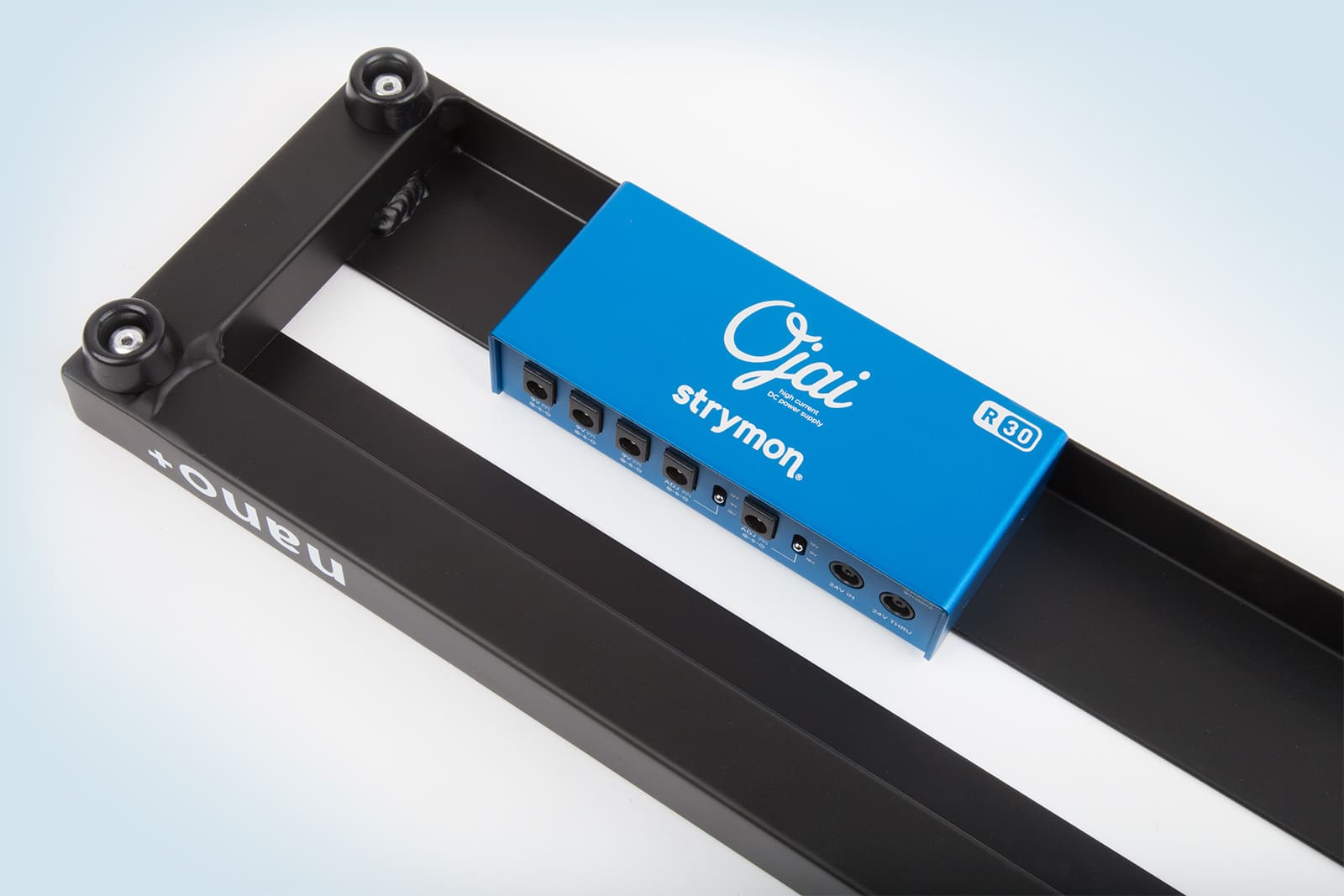
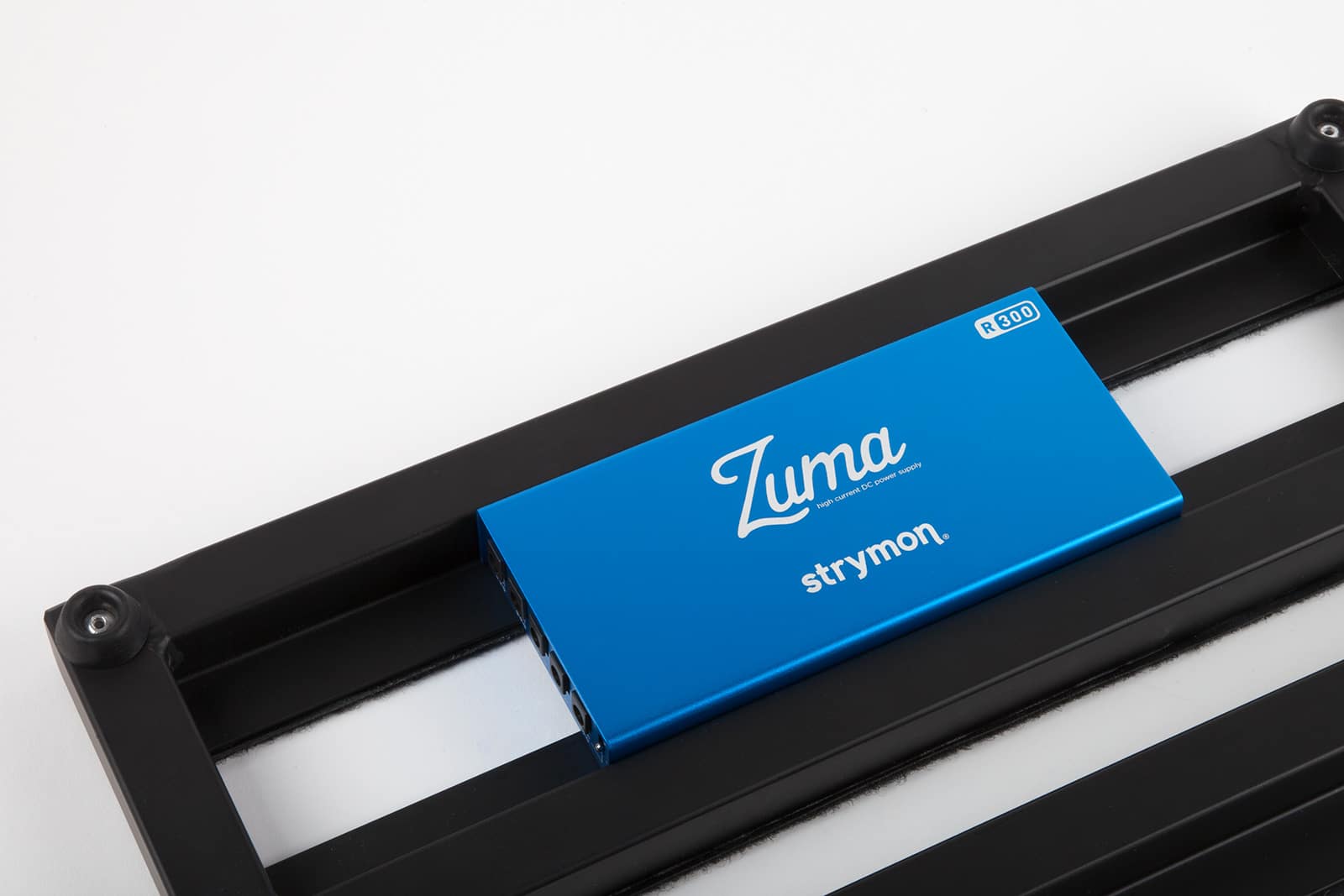
The compact size is a welcome feature for those who want to fit as many pedals as possible within their board. The Ojai has dimensions of 81mm (width) x 58mm (height) x 33mm (depth), making it arguably one of the smallest in the industry. Both the Ojai R30 and Zuma R300 are very slim, making them easy to tuck away on the underside of slatted pedalboards like Pedaltrain.
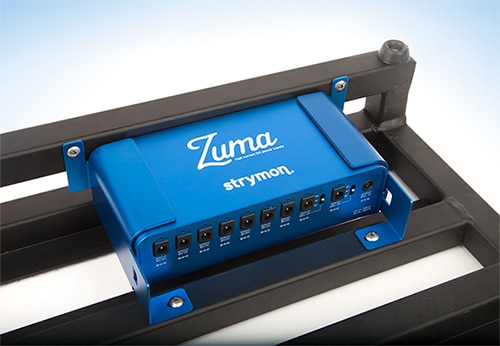
Cons of Ojai and Zuma
Ojai is Small, but its Power Adapter is Large
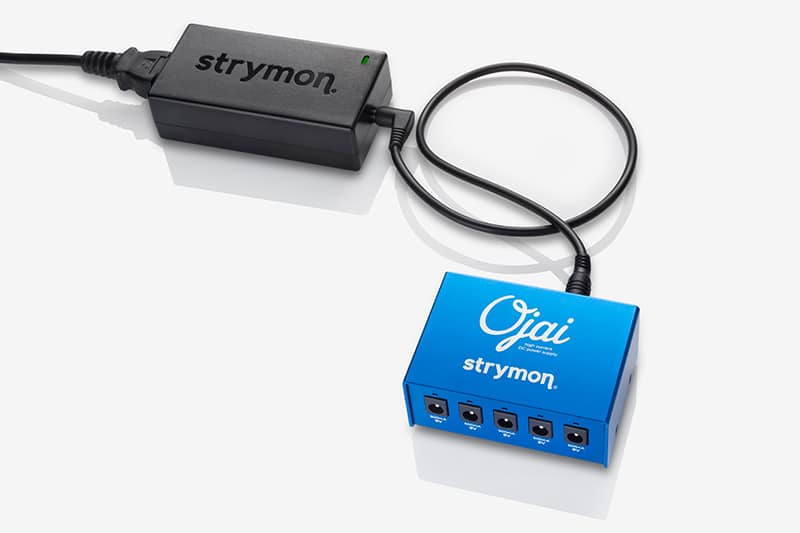
The power adapter (PS-124) for both Ojai and Ojai R30 has dimensions of 107mm (width) x 55mm (height) x 32mm (depth), including protrusions.
It’s larger than the Ojai unit itself. If you want to secure it within the pedal board, some ingenuity might be required.
Only 5 Output Ports (excluding the original Zuma)
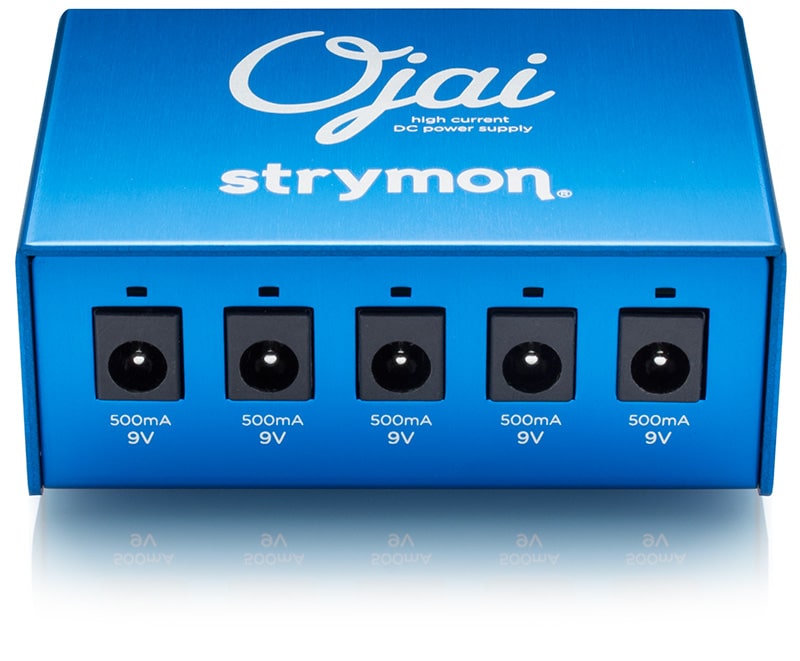
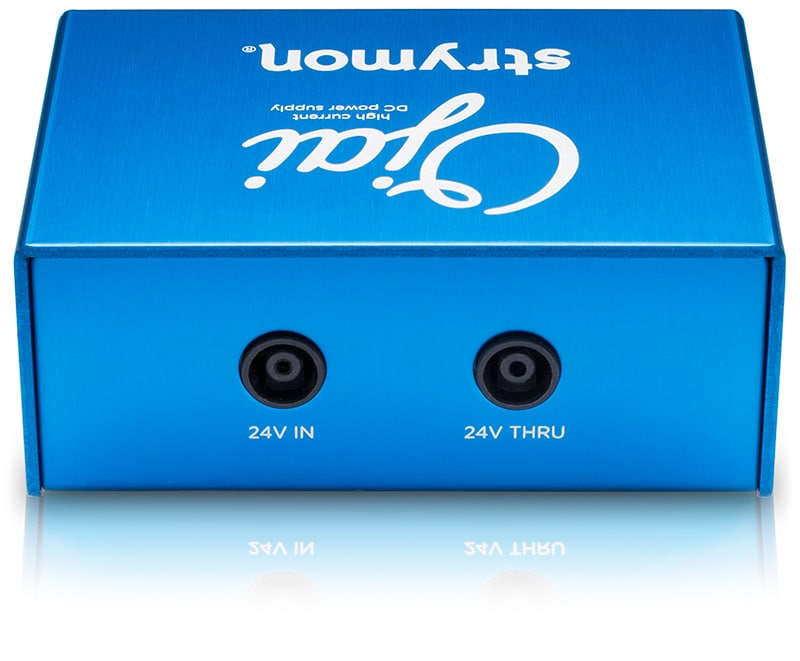
Except for Zuma, there are only five output terminals. However, Ojai and Zuma can be linked using a dedicated cable. It’s possible to power up to 20 Ojai units with just one power adapter.
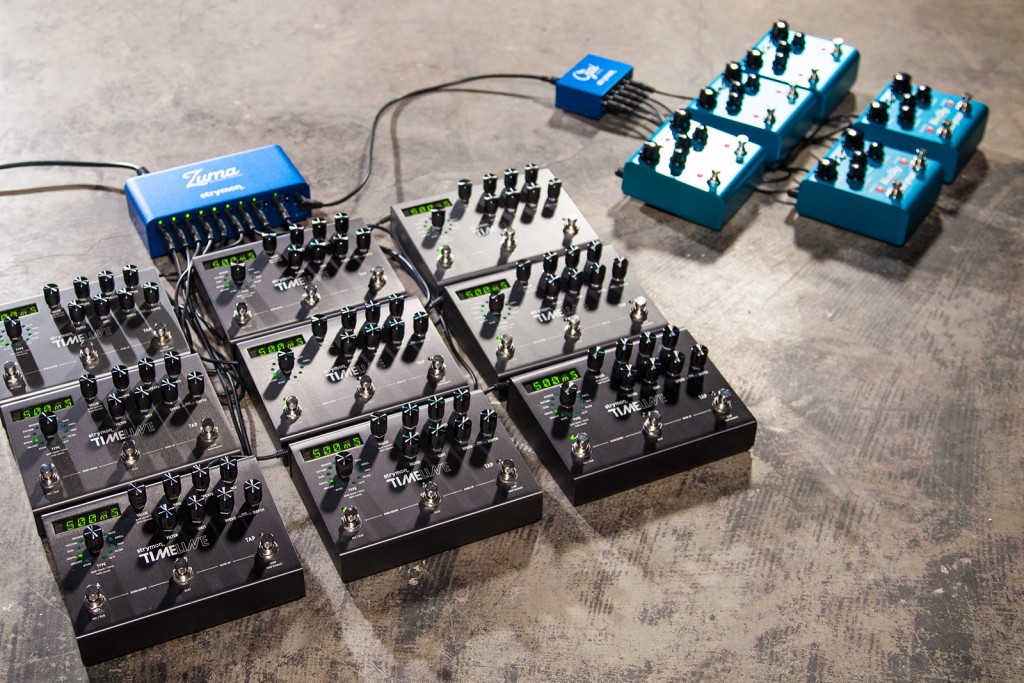
Considering operational stability, it’s probably practical to link 2 to 3 units and connect 10 to 15 pedals with varying current consumption.
If you can operate 15 units, it should be enough to cover an entire pedal board, wouldn’t you think?
Relatively Expensive Among Power Supplies
On Amazon, there are Chinese-brand power supplies available for a few tens of dollars, and Fender’s Engine Room ranges from $130 to $270.
For Strymon, the prices are as follows:
Ojai: $169
Ojai R30: $189
Zuma R300: $229
Zuma: $279
Expansion Kits:
Ojai Expansion Kit: $149
Ojai R30 Expansion Kit: $169
If you want to use more than six effectors, the cost can go up to around ¥30,000.
That said, the reason I chose Strymon is that power supplies aren’t something you replace often. By initially choosing the best, like these, you’re freed from unnecessary efforts and worries about power noise. Considering the design costs and the fact that Strymon products are made in the USA, they aren’t outrageously expensive.
Comparison of Strymon Ojai, Ojai R30, and Zuma R300
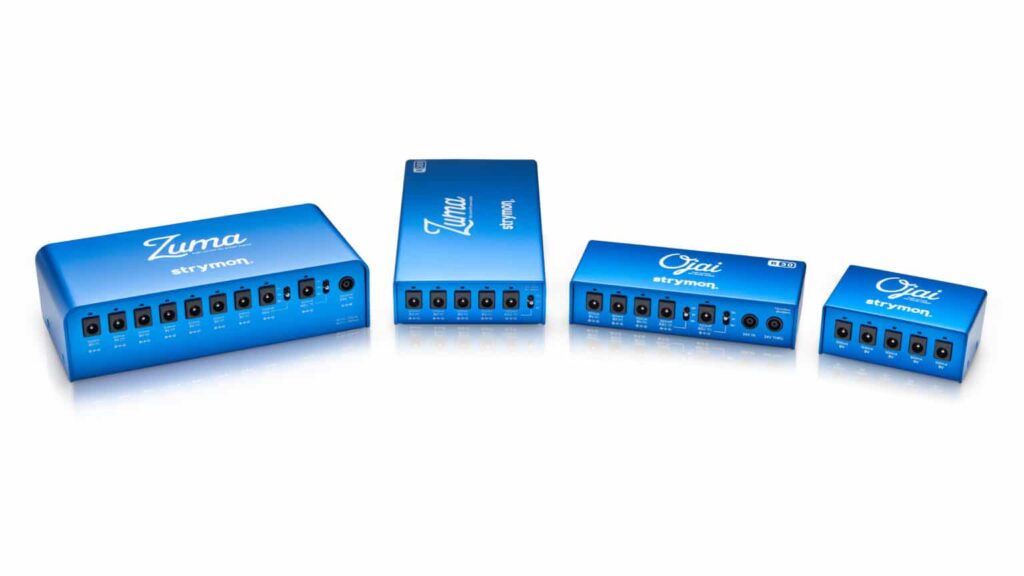
| Specification | Ojai30 | Ojai R30 | Zuma R300 | Zuma |
|---|---|---|---|---|
| Market Price | $169 | $189 | $229 | $279 |
| Output | 9V 500mA*5 | 9V 500mA3, 9V/12V/18V switchable 500mA2 (Total 5) | 9V 500mA4, 9V/12V/18V switchable 500mA1 (Total 5) | 9V 500mA7, 9V/12V/18V switchable 500mA2 (Total 9) |
| Max mA | Max 22.5W (All at 9V) 2500mA | Max 22.5W (All at 9V) 2500mA | Max 36W (All at 9V) 4000mA | Max 48W (All at 9V) 5333mA |
| Size | 81mm x 58mm x 33mm | 130mm x 58mm x 29mm | 184mm x 88mm x 30mm | 173mm x 84mm x 46mm |
| Weight | 133g | 171g | 400g | 680g |
| Power Adapter (PS-124) | 107mm (W) x 55mm (H) x 32mm (D) (including protrusions), Weight: 133g | 107mm (W) x 55mm (H) x 32mm (D) (including protrusions), Weight: 133g | None (IEC Cable) | None (IEC Cable) |
Size
If you want to tuck it under a flat, slatted pedalboard like the Pedaltrain nano, the slim Zuma R300 is recommended.
With the Ojai, you can elevate the board’s legs and tuck it underneath.
The Ojai R30, being 3mm thinner than the Ojai at 29mm, can be easily placed underneath without any elevation. However, in the end, you can’t tuck the 32mm thick adapter with it underneath. If you have a larger, inclined Pedaltrain, the space underneath is more expansive, so you don’t have to worry about this aspect. All of them are lightweight, so you can attach them underneath using Velcro.
Power
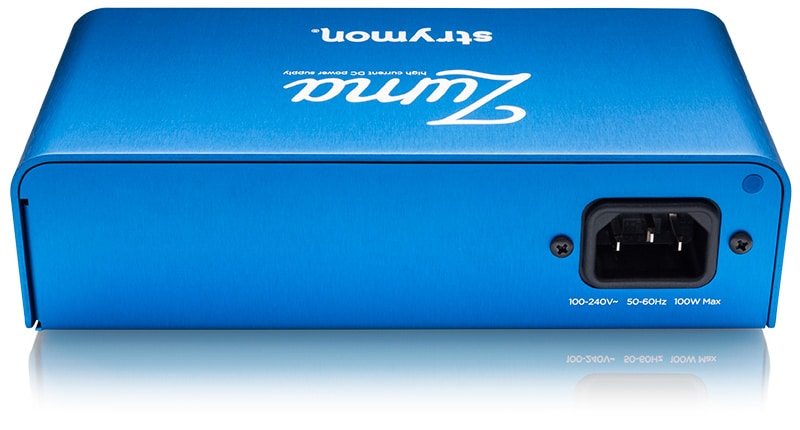
Ojai and Ojai R30 require a dedicated AC adapter (PS-124) and an IEC cable attached to it. Both are included with the main unit.
Zuma R300 and Zuma connect the IEC cable directly to the Zuma unit. These IEC cables are the same as those used for guitar amps. The IEC cable provides even more power and can drive dozens of pedals when connected to other Ojai units.
Conclusion: How to Choose
Strymon is the most recommended power supply. If you’re spending time worrying about noise with cheaper power supplies, investing in Strymon allows you to focus on sound creation and practice. You won’t regret it in terms of quality and noise.
Recommended for those considering Ojai:
- Want to keep it compact on the pedalboard.
- Only use pedals that operate at 9V.
- Want the most affordable power supply from Strymon.
Recommended for those considering Ojai R30:
- Have 2 pedals that operate at 12V or 18V.
- Prefer a slim body with a compact size.
Recommended for those considering Zuma R300:
- Want to tuck it under boards like the Pedaltrain Nano.
- Have 1 pedal that operates at 12V or 18V.
- Find AC adapters cumbersome and are seeking the highest quality power supply.
Recommended for those considering Zuma:
- Use between 6 to 9 pedals.
- Use 10 or more pedals that require a large current.

